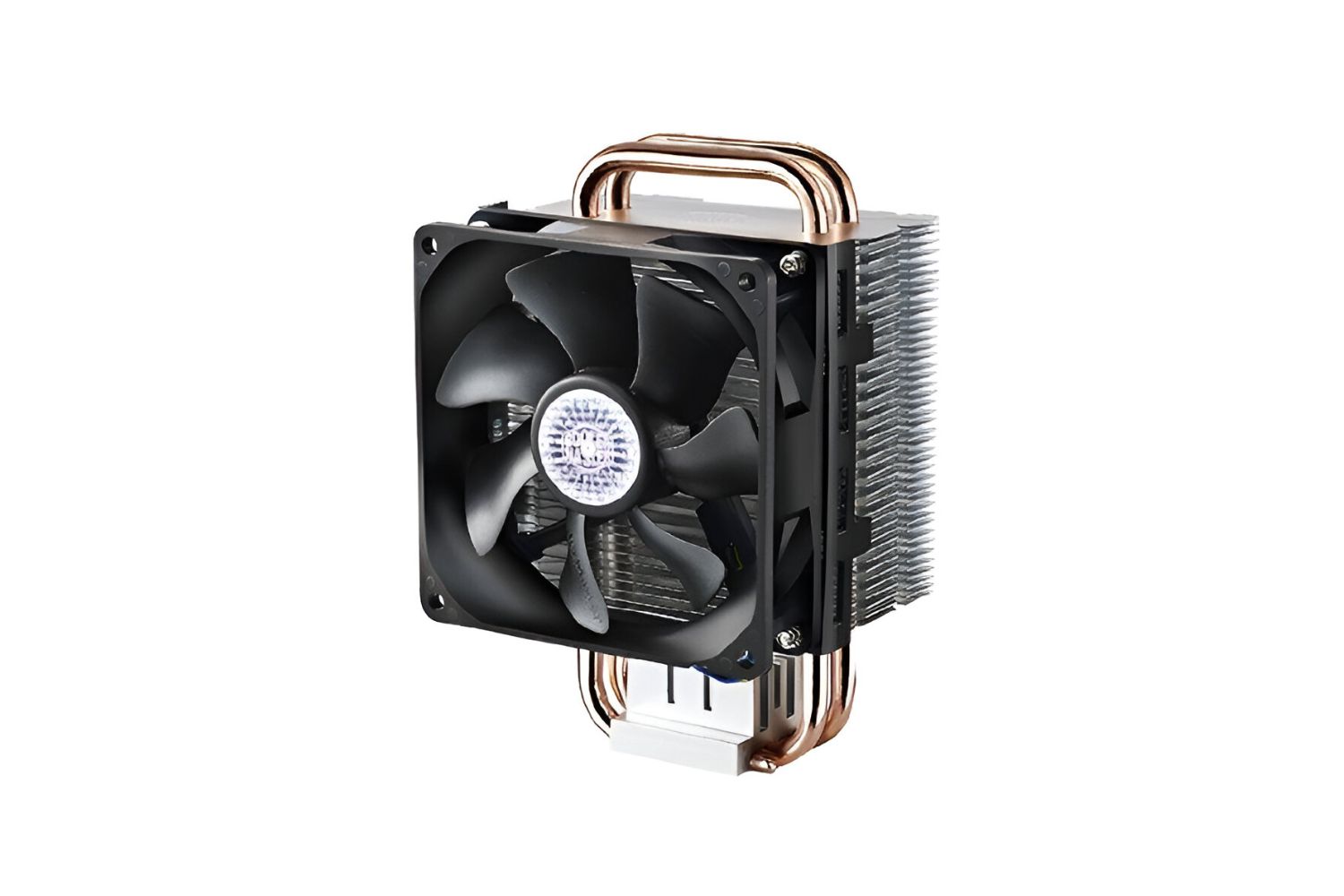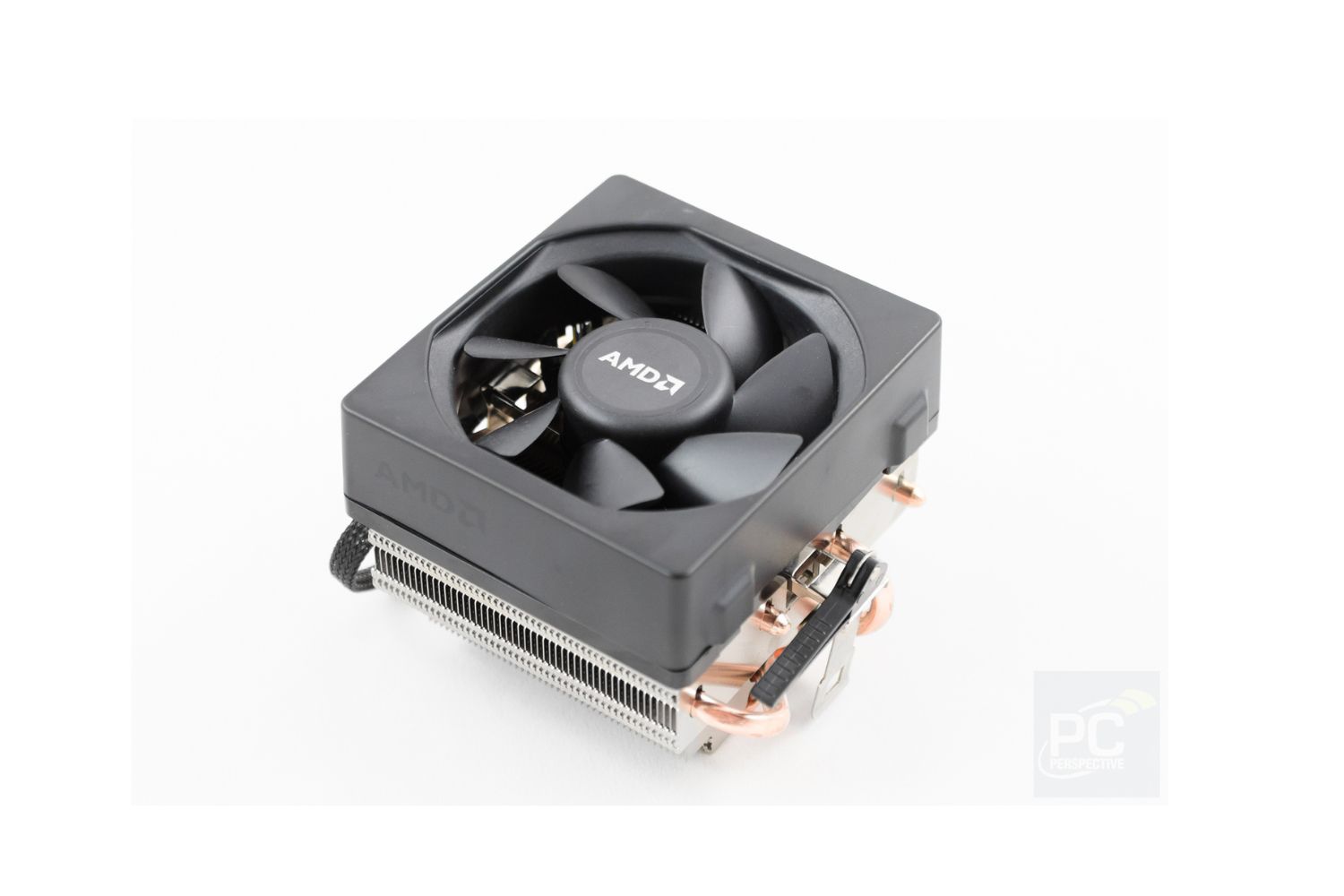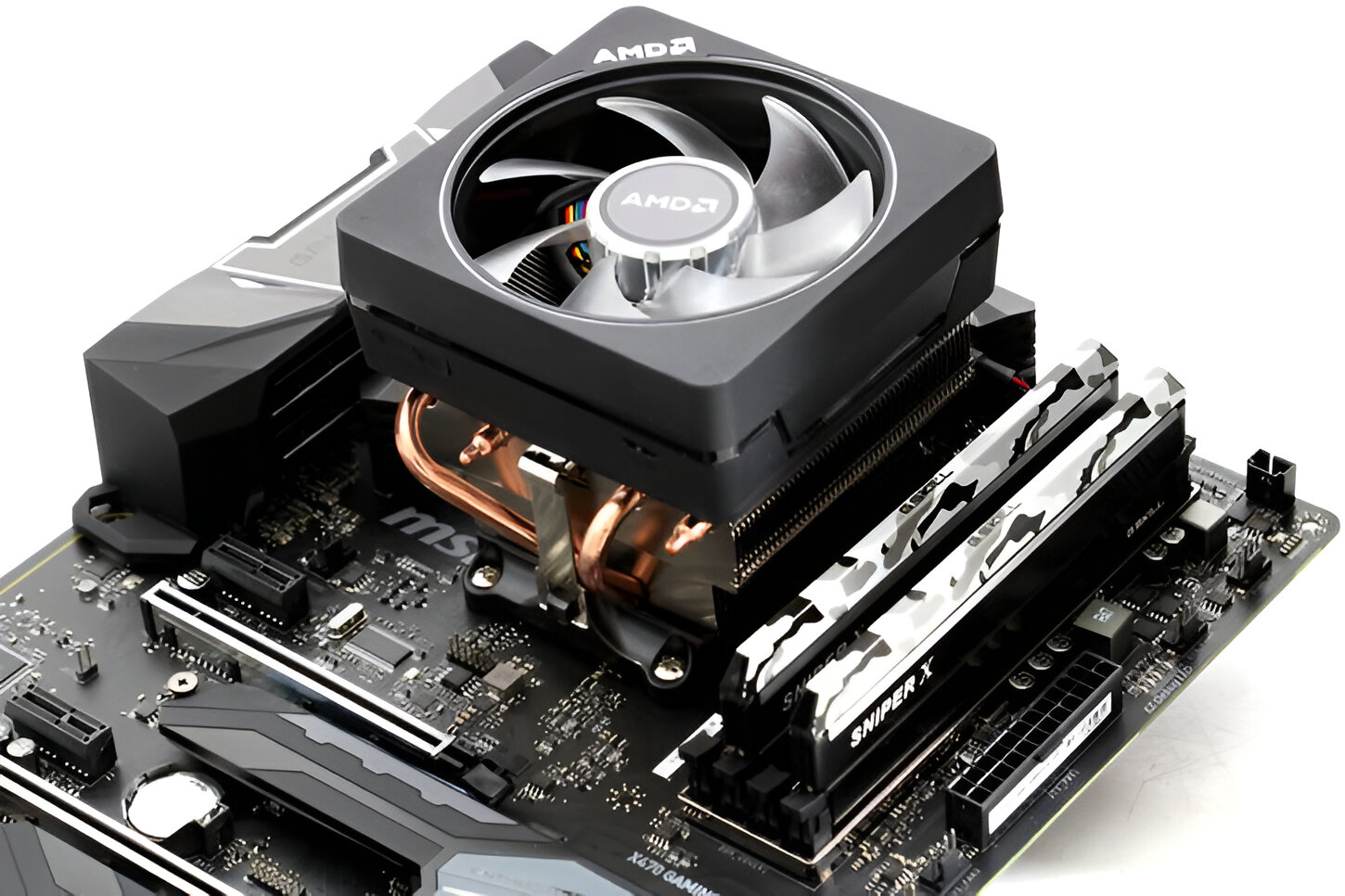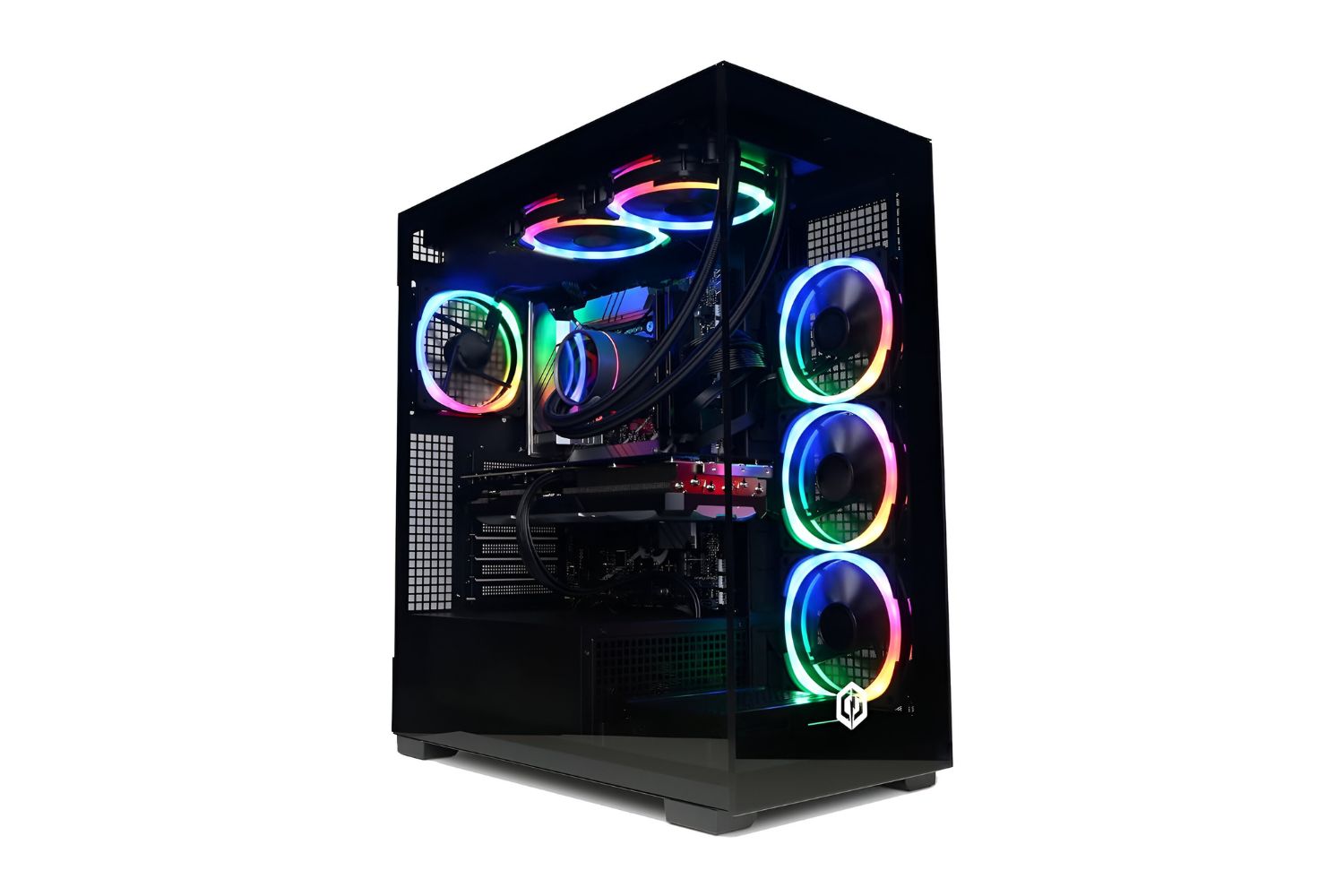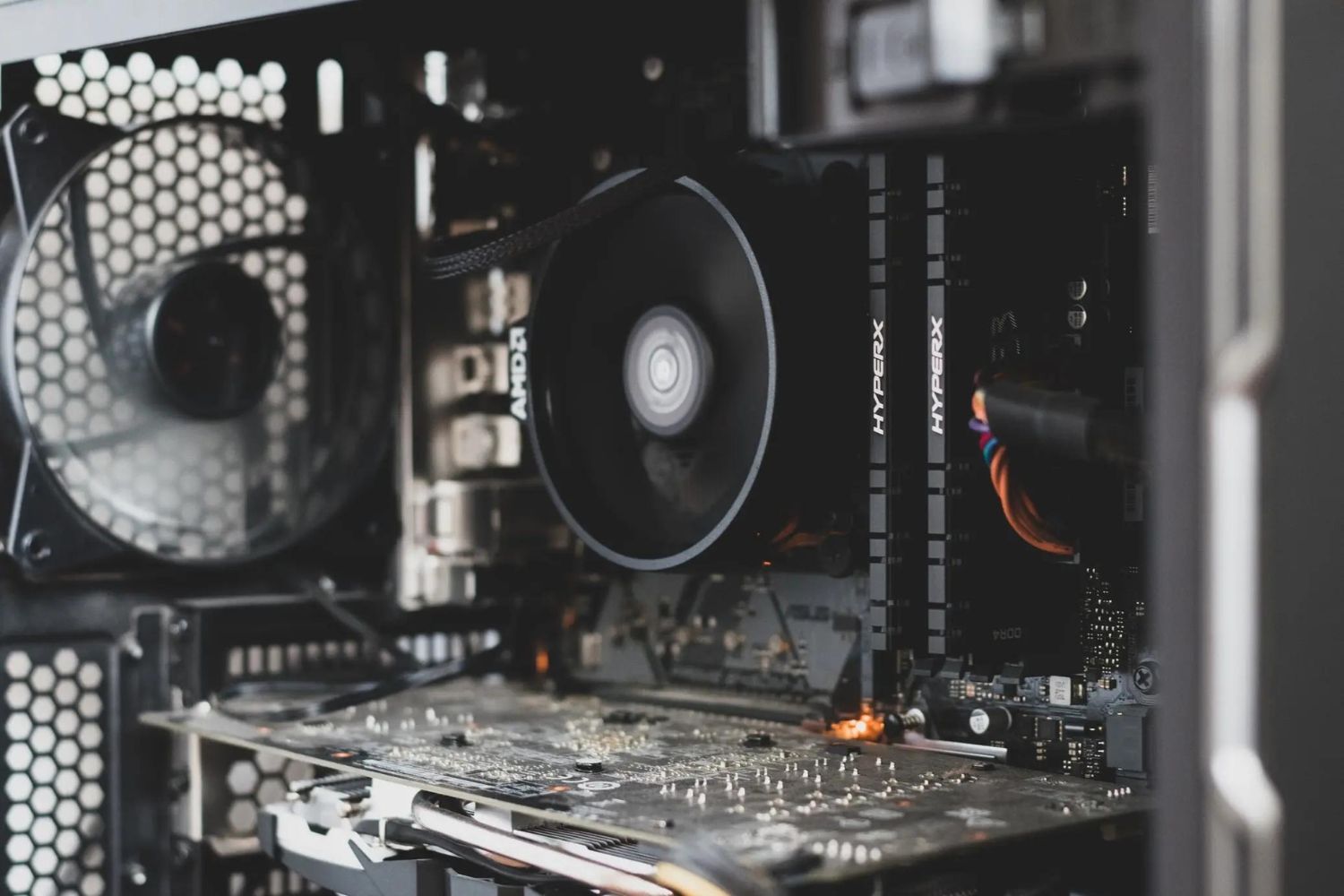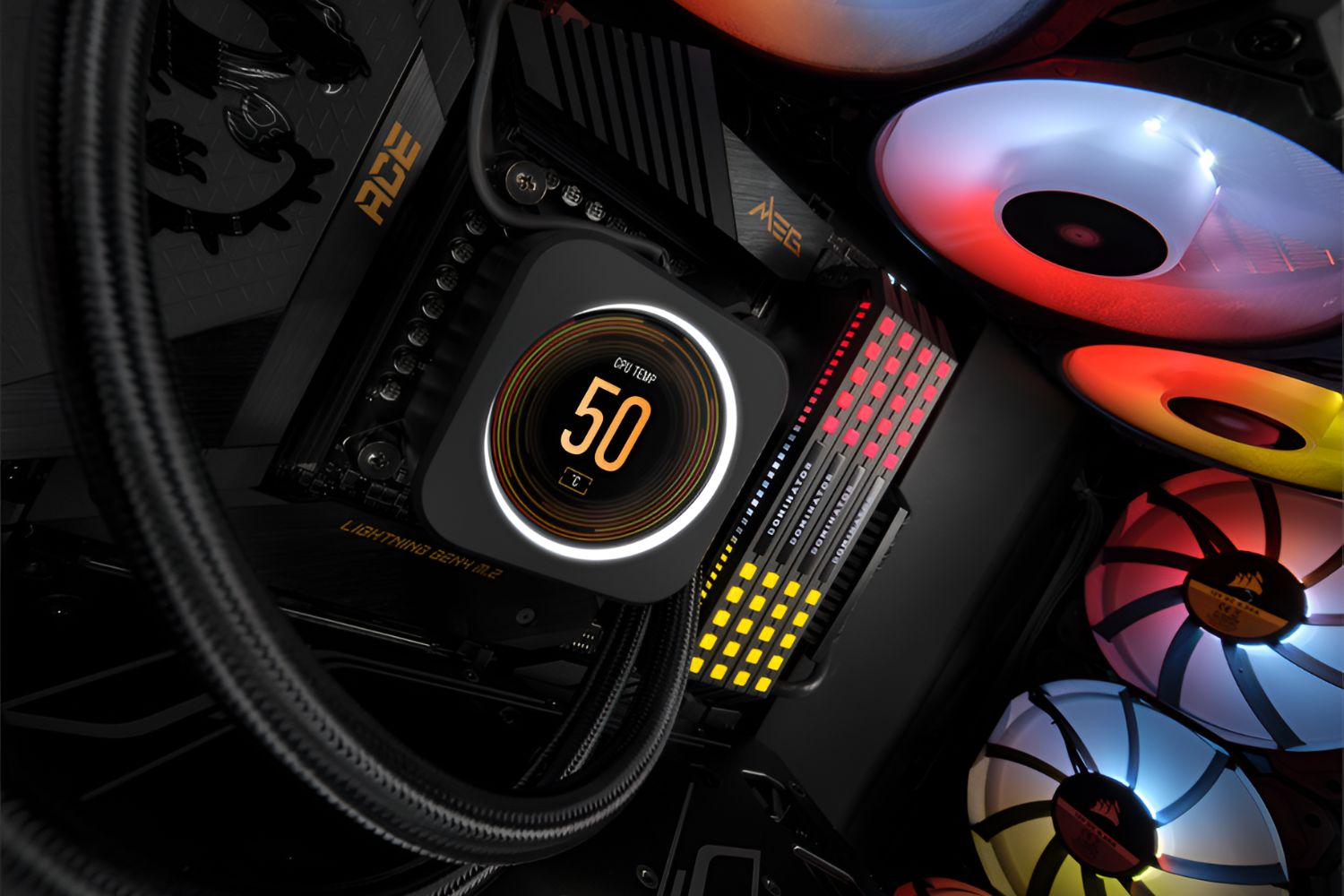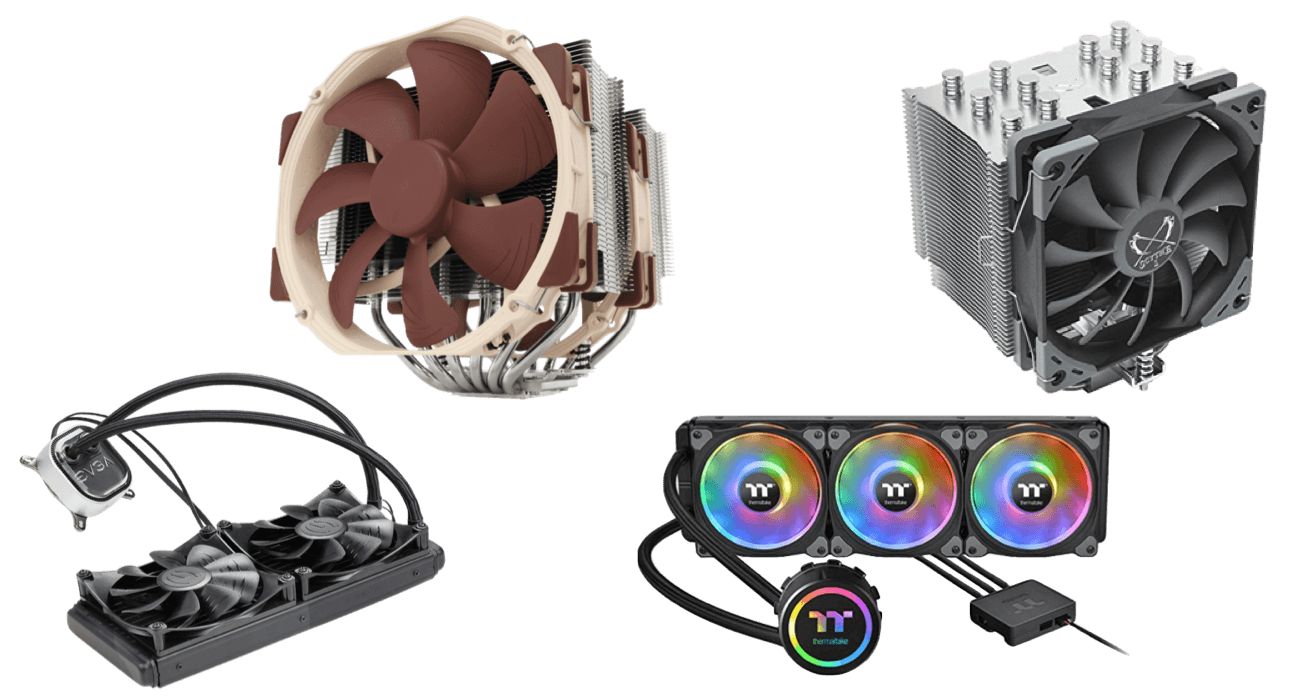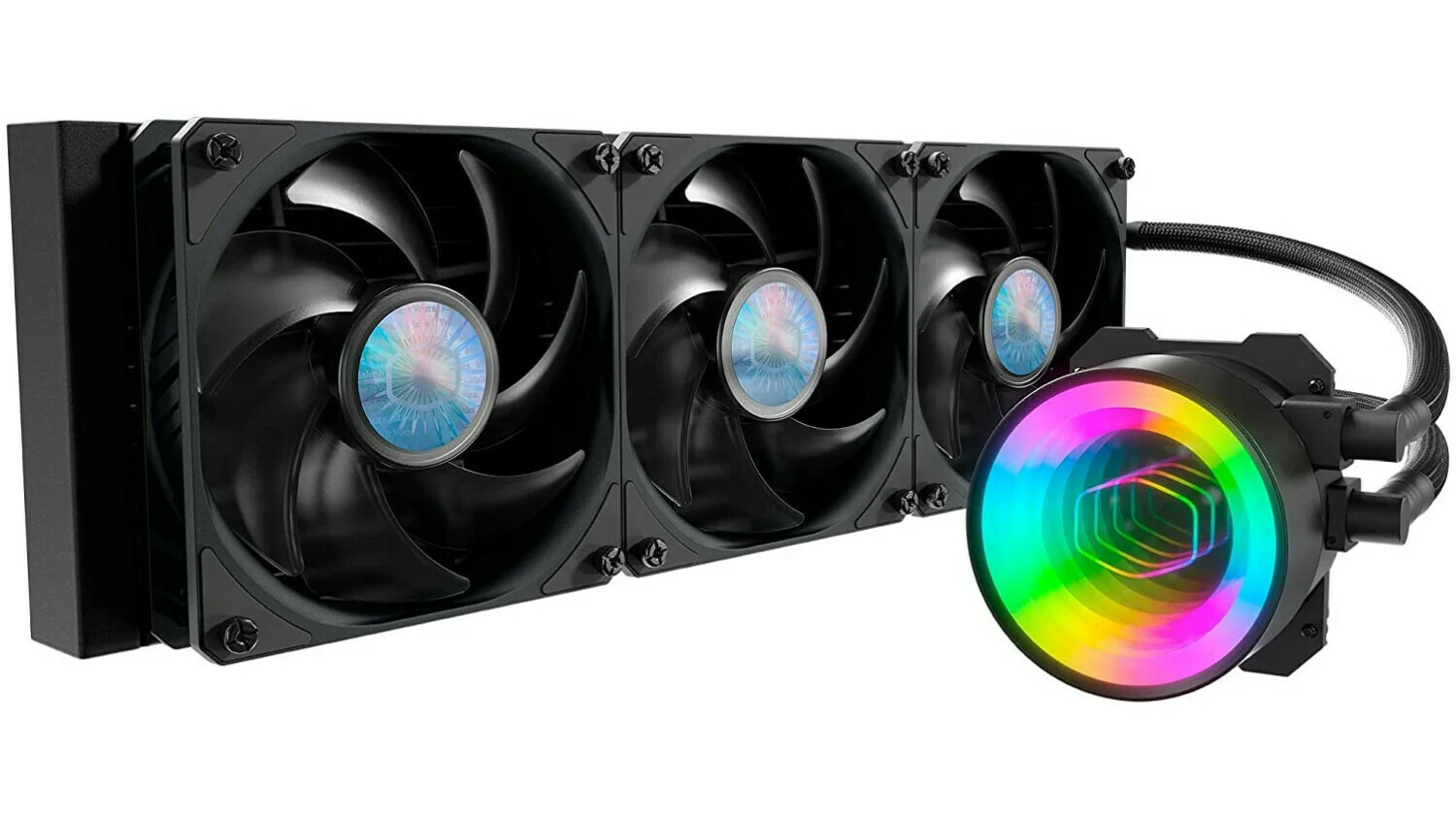Introduction
Welcome to the world of CPU coolers, where the quest for optimum performance goes hand in hand with the need for a quiet computing experience. If you are a PC enthusiast or a gamer, you understand the importance of keeping your CPU cool to maintain its efficiency and prevent overheating, especially during intensive tasks. But have you ever considered the impact of noise level when choosing a CPU cooler?
A CPU cooler is a vital component of any computer system, responsible for dissipating the heat generated by the CPU. It consists of a heatsink and a fan (or fans) that work together to keep your CPU’s temperature in check. However, as the fan spins and air moves through the heatsink, it inevitably generates noise. This noise can range from a gentle hum to an audible roar, depending on the type and quality of the cooler.
While the performance of a CPU cooler is crucial, it’s important not to overlook the noise level. Excessive noise can be distracting and affect your overall computing experience, whether you’re trying to focus on work, enjoy a movie, or immerse yourself in a gaming session. That’s why it’s essential to find a CPU cooler that strikes the right balance between efficient cooling and low noise output.
But just how important is noise level when it comes to CPU coolers? It turns out, it’s more critical than you might think. Noise pollution not only affects your concentration and productivity but can also lead to stress-related health issues in the long run. Additionally, any noise coming from your computer can disrupt the tranquility of your environment, whether you’re at home, in the office, or even in a gaming tournament.
In this article, we will explore the various aspects of noise level in CPU coolers, including the different types and their typical noise output. We will also discuss some cooling solutions that can help reduce noise without compromising performance. So, if you’re one of those who seek a quieter computing experience, read on to discover how to choose the right CPU cooler for your needs.
What is CPU Cooler?
Before we delve deeper into the topic of noise level in CPU coolers, let’s start by understanding what a CPU cooler actually is. As mentioned earlier, a CPU cooler is a crucial component of any computer system, responsible for dissipating the heat generated by the CPU.
When your CPU is running intensive tasks or operating at high frequencies, it generates a significant amount of heat. If left unchecked, this heat can cause the CPU to overheat, leading to performance issues, system instability, or even permanent damage. A CPU cooler helps prevent this by efficiently transferring the heat away from the CPU and dispersing it into the surrounding environment.
A typical CPU cooler consists of two main components: the heatsink and the fan. The heatsink is a metal structure designed to dissipate heat. It comprises of numerous fins or heat pipes that provide a large surface area for heat transfer. As the CPU generates heat, it gets transferred to the heatsink through direct contact or heat pipes.
The fan, on the other hand, plays a crucial role in increasing the cooling efficiency of the heatsink. It helps to accelerate the airflow over the fins, allowing for faster heat dissipation. The fan draws in cool air from the surroundings and directs it towards the heatsink, where it picks up the heat and carries it away. This continuous cycle of airflow helps to maintain the temperature of the CPU within safe operating limits.
Now, you might be wondering, why is a CPU cooler necessary? Can’t we rely on the fans built into the computer case? While the case fans contribute to overall airflow within the system, they are often insufficient for adequately cooling the CPU. The CPU generates the most heat in the system, and it requires dedicated cooling to ensure optimal performance and longevity.
CPU coolers come in various sizes, designs, and cooling capacities. Some CPU coolers are small and compact, ideal for low-power CPUs and slim cases. Others are larger and more powerful, capable of handling high-performance CPUs and overclocking scenarios. The choice of CPU cooler depends on the specific requirements of your system and the level of heat generated by your CPU.
In the next sections, we will explore the significance of noise level in CPU coolers and how it can impact your computing experience. We will also discuss the different types of CPU coolers and their typical noise output, as well as some cooling solutions that can help reduce noise while maintaining efficient cooling performance.
The Importance of Noise Level
When it comes to choosing a CPU cooler, noise level is an important factor that shouldn’t be underestimated. The noise generated by your computer can have a significant impact on your overall computing experience, affecting your concentration, productivity, and even your well-being.
Imagine you’re working in a quiet office environment, and you need to focus on a complex task. Suddenly, the sound of a loud and whirring fan from your CPU cooler breaks your concentration. This distraction can disrupt your workflow, causing frustration and decreased productivity. Similarly, if you’re a gamer, a noisy CPU cooler can interfere with the immersive gaming experience, making it difficult to fully immerse yourself in the virtual world.
Noise pollution is not just an annoyance; it can have long-term health effects as well. Studies have shown that exposure to prolonged or excessive noise can lead to stress, sleep disturbances, and even cardiovascular problems. It’s important to create a quiet and peaceful environment, especially if you spend extended periods in front of your computer.
Furthermore, noise level can be a crucial consideration in certain environments, such as recording studios or home theaters. In these settings, even the slightest noise can be picked up by sensitive microphones or disrupt the audio experience. A noisy CPU cooler can introduce unwanted background noise, affecting the quality of recordings or the enjoyment of movies and music.
Choosing a CPU cooler with a low noise level can significantly improve your computing experience. You can enjoy a quieter workspace, free from distracting fan noises. Whether you’re engaged in professional work, gaming, or entertainment, a quiet CPU cooler allows you to fully immerse yourself in the task at hand without unnecessary disturbances.
So, how do you determine the noise level of a CPU cooler? Manufacturers often provide specifications such as decibel (dB) ratings or noise level ranges for their coolers. These ratings indicate the loudness of the cooler’s fan when running at its maximum speed. Keep in mind that these ratings can vary depending on factors such as fan size, speed, and design. It’s always a good idea to read reviews and feedback from other users to get a better understanding of the actual noise performance of a specific CPU cooler.
In the following sections, we will explore some considerations for noise level when choosing a CPU cooler, as well as the different types of CPU coolers and their typical noise output. By understanding the impact of noise level and exploring the available options, you can make an informed decision and find a CPU cooler that provides both efficient cooling and a quieter computing experience.
Quiet, Please!
When it comes to the noise level of a CPU cooler, the general consensus is clear: quieter is better. A quieter CPU cooler can enhance your computing experience by providing a peaceful and distraction-free environment. But how do you achieve this desired quietness? Let’s explore some considerations for reducing noise when choosing a CPU cooler.
The first consideration is to opt for a CPU cooler with larger fans. Larger fans, such as 140mm or 200mm, can move the same amount of air as smaller fans but at a lower RPM (revolutions per minute). Lower RPM means lower noise output. The larger fan blades also help to distribute the airflow more evenly, reducing turbulence and noise caused by smaller, faster-spinning fans.
Next, look for CPU coolers that feature PWM (Pulse Width Modulation) fans. PWM fans allow for precise control of fan speed based on the temperature of the CPU. When the CPU is idle or running at low temperatures, the fan speed can be reduced, resulting in quieter operation. As the CPU temperature increases, the fan speed can be adjusted accordingly to maintain efficient cooling while minimizing noise output.
You should also consider the type of bearing used in the fan. Sleeve bearings tend to be noisier compared to ball bearings or fluid dynamic bearings (FDB). Ball bearings offer better durability and quieter operation, while FDB fans provide improved heat dissipation and lower noise levels. Opting for a CPU cooler with ball bearings or FDB fans can contribute to a quieter computing experience.
Another aspect to consider is the fan speed control. Some CPU coolers come with built-in fan speed controllers or offer software-based fan control. These features allow you to manually adjust the fan speed to strike a balance between cooling performance and noise output. By finding the optimal fan speed, you can tailor the cooling solution to meet your specific needs while keeping noise levels in check.
In addition to these considerations, the overall design and construction of the CPU cooler can impact noise output. Coolers that feature a well-designed heatsink with optimized fin spacing and heat pipe layout can facilitate better heat dissipation, allowing for lower fan speeds and quieter operation. Furthermore, CPU coolers with noise-dampening materials or anti-vibration mounts can help reduce vibrations and minimize noise transmission.
It’s important to note that while reducing noise is a priority, it should not come at the expense of cooling performance. A CPU cooler should still provide adequate cooling to maintain the temperature of the CPU within safe limits, even under heavy loads or during overclocking. Therefore, it’s crucial to strike the right balance between cooling efficiency and noise reduction.
By considering factors such as fan size, fan type, fan speed control, and overall design, you can choose a CPU cooler that offers both effective cooling and a quieter computing experience. In the next sections, we will dive into the different types of CPU coolers and their typical noise output, providing you with valuable insights to make an informed decision for your specific needs.
Considerations for Noise Level
When it comes to evaluating the noise level of a CPU cooler, there are several factors to consider. Understanding these considerations will help you make an informed decision and choose a CPU cooler that fits your noise preferences. Let’s dive into the key aspects to keep in mind.
The first consideration is the noise level specifications provided by the manufacturer. Many CPU cooler manufacturers provide information about the noise level, typically in decibels (dB). However, it’s important to note that these specifications may not always accurately represent the actual noise output in real-life scenarios. Factors such as fan speed, load on the CPU, and ambient noise levels can influence the perceived noise. Therefore, it’s advisable to look for comprehensive reviews and user feedback to get a better understanding of the noise performance.
Another important consideration is the type of fan used in the CPU cooler. Fans can vary in terms of their noise output depending on factors such as fan size, blade design, bearing type, and fan speed. Smaller fans tend to produce more noise because they need to spin at higher speeds to move sufficient air. On the other hand, larger fans can maintain the same airflow with lower RPM, resulting in quieter operation. Additionally, fans with advanced bearing types such as fluid dynamic bearings (FDB) or ball bearings often offer quieter performance compared to sleeve bearings.
Additionally, it’s essential to consider the intended use of your computer. If you’re involved in activities that require a quiet environment, such as audio production or working in a noise-sensitive setting, you may prioritize a lower noise level. On the other hand, if you’re running demanding tasks that generate considerable heat, such as video editing or gaming, you may prioritize cooling performance over noise reduction. Evaluating your specific needs and understanding the trade-offs between noise level and cooling efficiency will help you make the right choice.
The location of your computer can also have an impact on the perceived noise level. If your computer is located in a closed cabinet or under your desk, the noise might be less noticeable. However, if your computer is placed on the desktop or in a quiet environment, a noisy CPU cooler can be more bothersome. If noise is a significant concern for you, consider incorporating noise-dampening materials or anti-vibration mounts into your setup to further minimize noise transmission.
Lastly, consider the overall airflow and cooling performance of the CPU cooler. A well-designed cooler with efficient heat dissipation capabilities can maintain the temperature of your CPU within safe limits at lower fan speeds. This translates to reduced noise output while still ensuring effective cooling. It’s important to strike a balance between cooling performance and noise reduction, ensuring that the CPU cooler meets your specific requirements.
By taking these considerations into account, you can make an informed decision and choose a CPU cooler that aligns with your noise preferences. In the following sections, we will explore the different types of CPU coolers and their typical noise output, providing you with valuable insights to help you find the perfect balance between cooling efficiency and noise reduction.
Types of CPU Coolers and Noise Level
When it comes to CPU coolers, there are two primary types: air coolers and liquid coolers. Each type has its own benefits and drawbacks, including differences in noise level. Understanding these differences can help you choose the right CPU cooler for your needs and preferences.
Air CPU coolers are the more traditional and commonly used cooling solutions. They consist of a heatsink and one or more fans. The fans help to dissipate heat by drawing cool air in and expelling hot air out of the heatsink. Air coolers are known for their reliability, cost-effectiveness, and ease of installation. They also come in different sizes and designs, allowing you to choose one that fits your case and CPU requirements.
Noise level can vary among air CPU coolers depending on factors such as fan size, fan speed, and overall design. Larger fans tend to produce less noise due to their ability to move the same amount of air at lower RPMs. Additionally, coolers with slower spinning fans or fans equipped with advanced bearing types, such as fluid dynamic bearings (FDB) or ball bearings, tend to generate less noise compared to higher RPM or sleeve-bearing fans.
Liquid CPU coolers, also known as all-in-one (AIO) coolers, have gained popularity in recent years, particularly for high-performance systems and overclocking enthusiasts. These coolers consist of a pump, tubing, and a radiator with cooling fins. The pump circulates liquid, typically a mixture of water and coolant, to absorb and transfer heat away from the CPU. The heated liquid then flows through the tubes and into the radiator, where it is cooled by the fans before being recirculated.
Liquid coolers can offer exceptional cooling performance due to the efficiency of liquid as a heat-transfer medium. However, they do come with some considerations regarding noise level. The pump unit in a liquid cooler can generate a low hum or buzzing sound, although most modern pumps are designed to minimize noise. Additionally, the fans that accompany liquid coolers can produce noise similar to those found in air coolers. The noise level of a liquid cooler is highly dependent on the fans used and their RPM settings.
It’s worth noting that while liquid coolers can provide excellent cooling performance, they can be more expensive than air coolers and may require more installation effort. Maintenance, such as monitoring fluid levels and possible leakage risks, should also be taken into consideration.
When considering noise level, it’s important to refer to specifications and reviews specific to the CPU cooler model you’re interested in. Manufacturers often provide noise level ratings for their coolers, giving you a general idea of what to expect. However, it’s crucial to keep in mind that noise performance can vary depending on individual system configurations and usage scenarios.
Ultimately, the choice between an air CPU cooler and a liquid CPU cooler comes down to your specific requirements, preferences, and budget. Both types have their pros and cons when it comes to noise level. By considering factors such as fan size, fan speed, bearing type, and overall design, you can choose a CPU cooler that strikes the right balance between cooling performance and noise reduction.
In the next section, we will explore cooling solutions and strategies specifically aimed at reducing noise while maintaining efficient CPU cooling.
Air CPU Coolers and Noise Level
Air CPU coolers have long been a popular choice among PC enthusiasts and gamers due to their reliability, cost-effectiveness, and ease of installation. These coolers consist of a heatsink and one or more fans that help dissipate heat generated by the CPU. While air CPU coolers provide efficient cooling, it’s important to consider their noise level, especially if you prioritize a quiet computing experience.
Noise level in air CPU coolers can vary depending on several factors, including fan size, fan speed, and overall design. Larger fans tend to produce less noise compared to smaller fans because they can move the same amount of air at lower revolutions per minute (RPM). With lower RPM, the fan generates less noise and results in a quieter operation.
Additionally, the bearing type of the fan plays a role in determining the noise level. Fans equipped with fluid dynamic bearings (FDB) or ball bearings generally offer quieter performance compared to fans with sleeve bearings. FDB and ball bearings provide smoother and more silent rotation, reducing the noise generated by the fan’s operation.
Fan speeds can also significantly impact the noise output of air CPU coolers. Higher fan speeds generate more noise due to the increased airflow and faster rotation. However, it’s worth noting that higher fan speeds are often necessary to dissipate heat effectively, especially during demanding tasks. Balancing the fan speed to meet cooling requirements while keeping the noise level in check is crucial for optimizing the performance and reducing noise output simultaneously.
Furthermore, the design of the heatsink can influence the noise level of an air CPU cooler. Coolers with well-designed heatsinks featuring optimized fin spacing and heat pipe layout can enhance heat dissipation, allowing for lower fan speeds and quieter operation. The smooth airflow through the heatsink can reduce turbulence and minimize noise caused by the interaction between the fan and the heatsink structure.
It’s important to refer to the manufacturer-provided noise level specifications when evaluating the noise output of air CPU coolers. These specifications, usually given in decibels (dB), can provide a general indication of the expected noise level. However, it’s essential to consider that these ratings are often measured at maximum fan speeds, which may not represent the actual noise in typical usage scenarios. Consulting reviews and user feedback can give you better insights into the noise performance of a specific air CPU cooler.
Overall, air CPU coolers offer a reliable and cost-effective cooling solution. With considerations such as fan size, fan speed, bearing type, and heatsink design, it’s possible to find an air CPU cooler that balances efficient cooling and low noise output. By choosing a cooler that fits your specific requirements, you can enjoy a quieter computing experience without compromising on cooling performance.
In the next section, we will explore cooling strategies and solutions specifically aimed at reducing noise in CPU cooling systems.
Liquid CPU Coolers and Noise Level
Liquid CPU coolers, also known as all-in-one (AIO) coolers, have gained popularity among PC enthusiasts and gamers seeking high-performance cooling solutions. These coolers utilize liquid, typically a mixture of water and coolant, to absorb and transfer heat away from the CPU. While liquid CPU coolers can provide efficient cooling, it’s important to consider their noise level, as it can impact your overall computing experience.
When evaluating the noise level of a liquid CPU cooler, it’s important to consider the different components involved. The pump, which circulates the liquid through the system, can generate a low hum or buzzing noise. However, most modern liquid coolers are designed with noise reduction in mind, and the pump noise is typically relatively low and not intrusive.
Another factor influencing the noise level of liquid CPU coolers is the fans. Like air coolers, liquid coolers use fans to dissipate heat from the radiator. The noise level of the fans can vary depending on factors such as fan size, blade design, and fan speed. Fans with larger blades tend to spin at lower RPMs while moving the same amount of air, resulting in quieter operation. Additionally, fans equipped with advanced bearing types, such as fluid dynamic bearings (FDB) or ball bearings, often produce less noise compared to fans with sleeve bearings.
It’s worth noting that the noise level of the fans in a liquid CPU cooler can vary depending on the fan speed settings. Many liquid coolers offer fan speed control options, allowing you to adjust the RPM and find a balance between cooling performance and noise output. By fine-tuning the fan speed, you can optimize the cooling efficiency while keeping the noise at a level that meets your preferences.
When it comes to noise level, it’s important to consider the overall configuration and layout of the liquid CPU cooler. Radiators with a denser fin design tend to offer better cooling performance but may require fans to operate at higher speeds, resulting in increased noise. On the other hand, liquid coolers with larger radiators and more airflow-optimized designs can provide efficient cooling at lower fan speeds, thus reducing noise output.
It’s important to mention that the noise level of liquid CPU coolers might also be affected by individual system configurations and usage scenarios. Different computer cases, fan placements, and fan profiles can impact the overall noise performance. Consulting reviews and user feedback specific to the model you’re considering can provide valuable insights into the actual noise performance of a liquid CPU cooler.
While noise reduction is a consideration, it’s important to also evaluate the cooling performance and compatibility of liquid CPU coolers. Liquid coolers offer excellent cooling capabilities, particularly for high-performance systems and overclocking. However, they can be more expensive than air coolers and may require more installation effort. Maintenance, such as monitoring fluid levels and addressing potential leak risks, should also be considered when opting for a liquid CPU cooler.
By considering factors such as fan size, fan type, fan speed control, radiator design, and pump operation, you can choose a liquid CPU cooler that strikes the right balance between efficient cooling and noise reduction. This will provide you with the desired cooling performance while ensuring your computing experience remains as quiet as possible.
In the next section, we will explore cooling solutions specifically aimed at noise reduction in CPU cooling systems.
Cooling Solutions for Noise Reduction
When it comes to reducing noise in CPU cooling systems, there are several cooling solutions and strategies that can help create a quieter computing environment. Let’s explore some of these solutions:
Fan Speed Control: Adjusting the fan speed is a straightforward and effective way to reduce noise without compromising cooling performance. Many CPU coolers, both air and liquid, offer fan speed control options. By lowering the fan speed, you can decrease noise output while still maintaining sufficient airflow for cooling. Software-based fan control utilities or BIOS settings can provide the flexibility to fine-tune the fan speed to meet your noise preferences.
Noise-Dampening Materials: Incorporating noise-dampening materials into your computer case or CPU cooler can help reduce noise transmission. These materials, such as acoustic foam or rubber grommets, absorb vibrations and isolate noise generated by fans and other components. They can significantly reduce noise resonances that may be transmitted through the chassis, resulting in a quieter computing experience.
Anti-Vibration Mounts: Installing anti-vibration mounts or pads between the fans and the heatsink or case can help minimize vibrations and noise. These mounts absorb and dampen vibrations, preventing them from being transmitted to the case, which could amplify the noise. Anti-vibration mounts are especially useful for air CPU coolers, as they can reduce fan vibrations and thus lower noise output.
Fan Replacement: If the stock fans that come with your CPU cooler are too noisy for your liking, you can consider replacing them with aftermarket fans that offer quieter operation. Look for fans with larger blades, lower RPM, and advanced bearing types such as fluid dynamic bearings (FDB) or ball bearings. These fans are designed for quieter performance while still providing sufficient airflow for cooling.
Case Fan Configuration: Optimizing the fan configuration within your computer case can also contribute to noise reduction. Ensuring that fans are properly placed and oriented can improve airflow and cooling efficiency while minimizing noise. Balanced airflow, well-distributed intake and exhaust fans, and efficient cable management can promote smoother airflow and reduce turbulence, resulting in quieter operation.
Water Pump Control: For liquid CPU coolers, some models offer control over the water pump speed. The water pump circulates the coolant within the system and can contribute to noise generation. By adjusting the pump speed, you can find a balance between cooling performance and noise output. Consult the manufacturer’s instructions or software utilities to explore pump speed control options.
Fanless CPU Coolers: If noise reduction is a top priority, you might consider fanless CPU coolers. These passive cooling solutions rely on large heatsinks without fans to dissipate heat. Without fans, the noise level is virtually eliminated. However, it’s important to ensure that your case and system airflow can effectively dissipate heat passively without causing the CPU to overheat.
Remember, while noise reduction is important, it shouldn’t come at the expense of efficient cooling. It’s crucial to strike a balance between noise reduction and maintaining safe operating temperatures for your CPU. By implementing these cooling solutions and strategies, you can create a quieter computing environment without compromising cooling performance.
In the next section, we will wrap up our discussion and provide a summary of the key points related to noise level considerations in CPU coolers.
Conclusion
When it comes to choosing a CPU cooler, considering the noise level is essential to ensure a pleasant and distraction-free computing experience. Whether you opt for an air CPU cooler or a liquid CPU cooler, there are important factors to keep in mind to strike the right balance between cooling performance and noise reduction.
Air CPU coolers, with their reliable performance and cost-effectiveness, offer a range of options to control noise levels. Factors such as fan size, fan speed, and bearing type can significantly influence the noise output. Opting for larger fans, fans with lower RPM, and advanced bearing types like fluid dynamic bearings (FDB) or ball bearings can contribute to quieter operation. Additionally, paying attention to the design of the heatsink and optimizing fan speed control can further enhance noise reduction.
Liquid CPU coolers, on the other hand, provide exceptional cooling capabilities, particularly in high-performance systems. While they may have a more complex installation process and higher cost, they offer the advantage of efficient heat dissipation. Noise considerations for liquid coolers revolve around the noise generated by the pump and fans. Modern pumps are designed with noise reduction in mind, and fan speed control options allow users to find the optimal balance between cooling performance and noise output.
Regardless of the type of CPU cooler chosen, additional cooling strategies can further reduce noise levels. Fan speed control, the use of noise-dampening materials, anti-vibration mounts, fan replacement with quieter alternatives, optimized case fan configuration, water pump control (for liquid coolers), and fanless CPU coolers are all viable options to reduce noise and create a quieter computing environment.
Ultimately, the goal is to find a CPU cooler that provides efficient cooling while maintaining a noise level that aligns with your preferences. Considering factors such as fan size, bearing type, fan speed, and design can help you make an informed decision. It’s also essential to refer to manufacturer specifications, reviews, and user feedback to get a better understanding of the noise performance of specific models.
By carefully evaluating noise level considerations, you can select a CPU cooler that allows you to work, game, and enjoy multimedia content without the distractions of excessive noise. Remember that finding the right balance between cooling performance and noise reduction is key to ensuring both optimal functionality and a quiet computing experience.









